ART Of Battling HIV: An Interview With Dr. Niveditha Manokaran
Sakshi Arya interviewed Dr. Niveditha Manokaran and talked about Antiretroviral Therapy (ART), which is a treatment for HIV.
Dr. Manokaran is a dermatologist, venereologist, sexual and reproductive health worker, and most importantly an HIV specialist based in Sydney, Australia. However, it would be less to define her just by the titular aspects of her health-related specialties. She is above all a kind person who believes in the healing powers of talking and so, offers emotional and therapeutic consulting. Her Instagram handle– which she tells me she developed somewhere around the beginning of the ongoing covid-19 pandemic as everything from meetings to education went online, to reach out to people who need the much necessary un-tabooed advice in India– is a little witty, knowledgeable, video journal full of positivity, and encouragement.
It is 11 pm in Australia when we finally settle for a little chat. Dr. Manokaran wears her hair down, with a grey top, a peach-colored scarf around her neck, and a smile as she puts aside her day’s weariness. What follows are some surprises about who Dr. Niveditha is, and how India is an important hub for HIV-related (positive, both in terms of cases and knowledge) information– a subject which has been stigmatized to an extent that all this information is unknown to people itself.
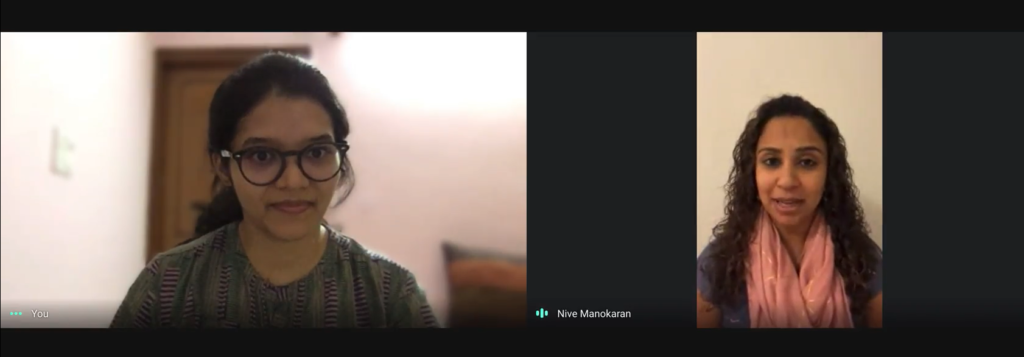
Sakshi Arya (SA): What led to your decision of working in this field of healthcare which is often marked by a lot of stigma/taboo?
Niveditha Manokaran (NM): Because I couldn’t find a job as a dermatologist and venereologist, despite studying in that field. (laughs) I wanted to be a cosmetologist really, which was why I studied derm., and it just didn’t work out! So, I trained as a sexual health specialist instead and it changed my life. It was just meant to be that I had to do this. I was fascinated when I was trained to be a sexual health specialist here [Australia], as to how we respect people’s sexual lives and how non-judgemental we have to be.
Because I was of Indian background, everything was very suspicious and curious to me. And I was feeling awkward and conscious to ask those questions. Like are you homo or hetero, if you are the bottom or top in sex, all these things were so mortifying and embarrassing. But now I don’t even flinch. That is something that is lacking in India. When I lived there, and I feel guilty for not having helped people there because there was no knowledge of the sort, I could never ask people if their sex was consensual or if they were being assaulted. Nobody has ever asked that question to me or anyone else.
STIs are silenced because we never ask the right kind of questions. But now I am a frontline worker aiming at the prevention of rape and assaults. I hope to work towards these concerns in India too, a country where I grew up. So here I am doing what I am doing, even through social media– just to give back a little of what I have learned after years of personal and professional experience.
“Those who are having sex with the high-risk population are the ones who refuse to believe that they have HIV. They have no idea what to do, about protection, and testing strategies, which is a gap.”– Dr. Niveditha
SA: How far do you think India has come in terms of sex-ed and SRHR awareness?
NM: I should say India has come a really long way in terms of sex-ed and sexual positivity but again we are talking about a population of over 1 billion so we definitely have a huge population and many more aspects to cover. Now we definitely have social media platforms to talk about sex and sex-ed, but this is just the beginning.
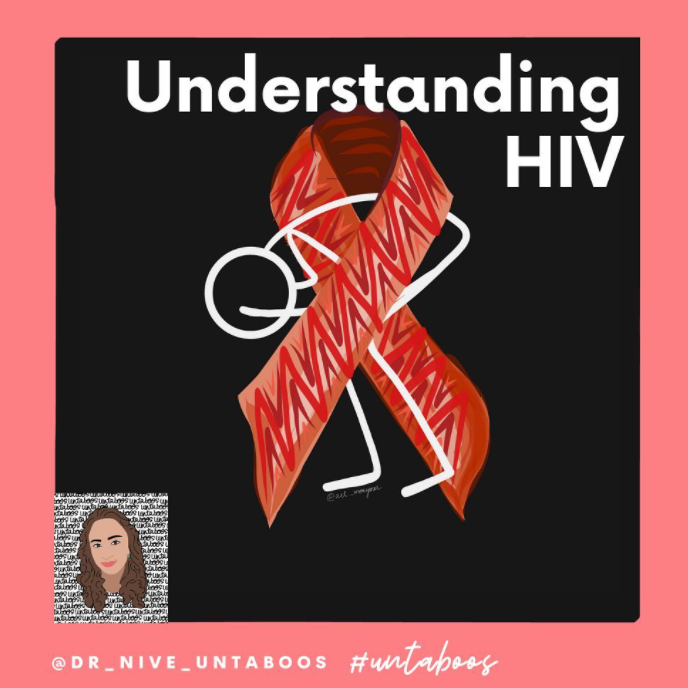
SA: Your knowledge in the field of HIV has been lauded. So, now there are some questions around the topic which a lot of people, especially in India, find difficult to answer, even to themselves because there’s a lack of information. Firstly, where do you think does India and the Indian population stand with their understanding of HIV, its causes, and prevention?
NM: I think, HIV is still a very taboo-ed topic and there are a lot of myths around HIV. Like saying that people with a certain caliber of sexual acts, or only gay men, are the only ones who can get HIV. However, anyone can get HIV. That’s important because a lot of the time people think ‘it’s not me’, and they don’t get tested.
These things are not understood by a very large number of people and that’s why there has been an increased rate of HIV– among the hetero, homosexual, as well as trans population in India. But still, sex workers, gay men, trans people are better educated about HIV, maybe because they have contracted the virus or come across someone who has. Others who are having sex with the high-risk population are the ones who refuse to believe that they have the virus. They have no idea about what to do, and about the protection, and testing strategies, which is a gap.
To bridge this, it’s necessary to de-stigmatizing HIV and educate people that HIV is no longer a death sentence. Undertreatment, HIV has actually become a chronic disease like diabetes, or hypertension, or high cholesterol where you have to take one pill every day to have the virus under control. The term used for ‘virus under control’ is undetectable. When the virus is undetectable, one actually lives a healthy life like any normal person both in terms of lifespan and infection, even in terms of sexual relationships and behavior.
Undetectable viral load even allows people to have unprotected sex with people without the risk of transmitting the virus at all, and even have babies who are HIV negative. Undetectable=Untransmissable. The symbol used to define this is U=U. [*my allegory: You=You] When we start educating with U=U, we are kind of cutting the stigma around HIV.
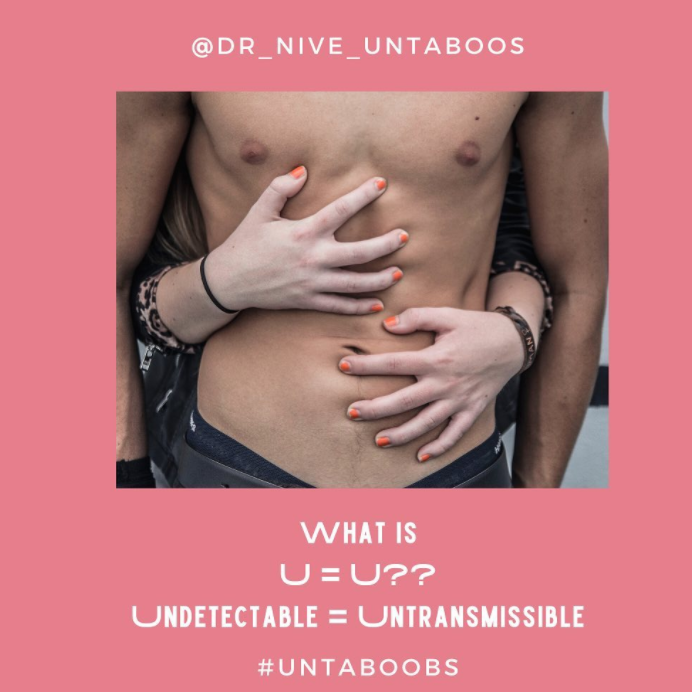
SA: There are no full-fledged treatments available for HIV, but like you said it could be made undetectable. There is a therapy called Antiretroviral Therapy (ART) for the same. What exactly is ART? To what extent is it available in India?
NM: Antiretroviral Therapy is for HIV medications. A combination of medications is usually mixed together to treat someone’s HIV– it is either a combination of two or three-drug regimes based on different parts of the world. Some injectables are also starting to roll out. So, there are several developments in terms of HIV treatments.
The most common one in use now is the three-drug regimen– which is to take 6 tablets twice a day or 8 tablets twice a day. With a lot of diarrhea, gut side-effects, loss of fat, and loss of muscle mass, people earlier used to guess one to have HIV by someone’s looks. Those kinds of drugs are not in use anymore, which makes it really difficult to tell if someone is infected or not– in a good way of course. These Antiretroviral Drugs are actually combined into one single tablet.
In India too this one tablet once a day regimen is being used and available for people to use and make their virus undetectable– very quickly. India also happens to have the most advanced tablets. However, it is not always that only one tablet regimen is available, there might be two to be taken. Still, these are the ones most effective. These ART drugs are a fantastic breakthrough to treat HIV. Of course, the medication needs to be taken throughout the infected person’s lifetime.
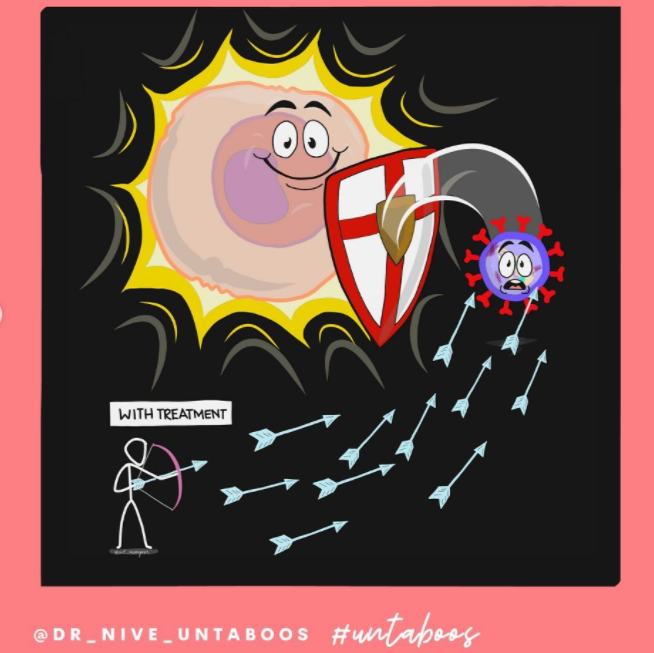
SA: How can this therapy be made available to those who cannot afford it– which is to say the underprivileged and unprivileged population?
NM: There are NGOs in India that particularly give out Antiretroviral Drugs. There are several hundred all over India that are in place, who give these drugs free of cost. So the government has already taken steps to manage the adequate distribution of Antiretroviral drugs. One can talk to their health professionals to know the appropriate locations.
There is even an app called NACO, which you can download and it will show you your nearest center to get free antiretroviral drugs. They are called ‘Suraksha Clinic’, and there are close to 569 centers in India. Their aim is to enhance availability, utility, and accessibility around the impact that they’re having for those who are HIV positive. The drugs which cost near 5000/- per head annually are borne by these clinics for free. So, yes those who can’t afford the medication can be taken care of as a result of some really great strategies.
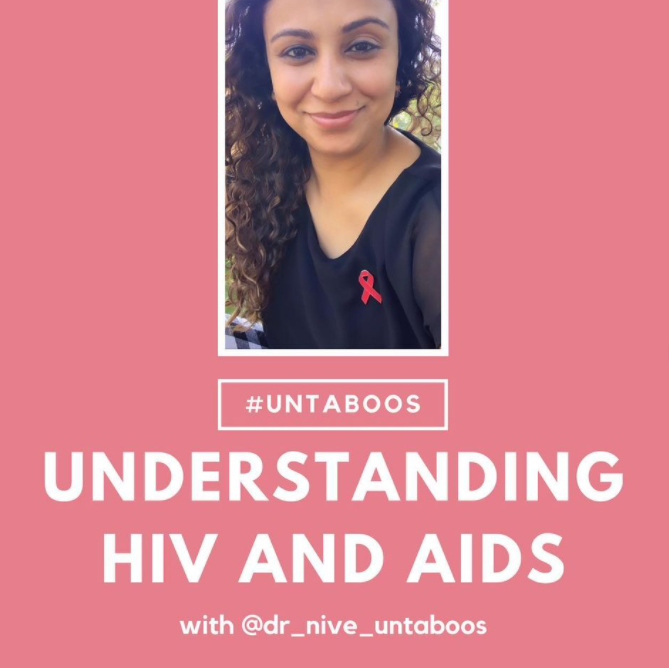
SA: How further do we need to take the topic of HIV, to finally be able to say that we are ideologically safe as a nation– that people are aware and prepared to take the necessary precautions, considering the shame one has to administer in saying they have HIV, because of the stigma surrounding the subject?
NM: There already is a multilingual toll-free helpline in India for helping people gain information about HIV, AIDS and all available treatments, with about 49 counselors working at all times. It is unfortunate as these policies are not advertised enough for people to learn about their presence and hence only the stigma exists. That is what the real gap is.
So the people who have really contracted the virus, or are familiar with someone who has is not going to spread the word or go on disclosing how they have something which the others treat as a taboo. We have to normalize this so that every single being is aware of what the virus is and what facilities are available to fight it. Another thing that people need to understand is that HIV is not AIDS and confusing to two is calling HIV a death sentence which it is not. Besides, anyone acquiring HIV does not have poor morale!

SA: How does contracting HIV affect a man and a woman’s body differently?
NM: The biggest difference definitely is pregnancy. This means a woman can be more capable of more people who can have HIV. So, it is very crucial. But having an undetectable viral load definitely means that she can have children who are not HIV positive. The woman always needs to take pregnancy-friendly HIV medication, if she is expecting. Upon birth, the child too is given medication for about 2 weeks. Women with HIV, even if they are undetectable, are not allowed to breastfeed.
Besides, women are also supposed to be on a very good and powerful long-acting contraception, in addition to medication, if they hope to avoid pregnancies. If an HIV-positive woman is not on medication, there is also a possibility that her menstrual blood has a virus, which is capable of transmission. If the virus is undetectable though, then the menstrual blood cannot transmit infection.

It was hard to conclude the interview per se because Dr. Manokaran had amazing things to talk about. But we did end with a mutual agreement that all the stigma needs to be normalized for people to be able to live together, leading healthy, happy lives. Her answers were self-explanatory. Finally, it is a beautiful feeling to know that your kind and kin’s care spans across oceans and manages to reach more people like you from continents afar.
(NOTE: Asterisk denotes writer’s emphasis on a subject.)
Follow @NivedithaManokaran to learn more about such topics!
Subscribe to Pratisandhi’s E-Newsletter for regular updates!
Author

